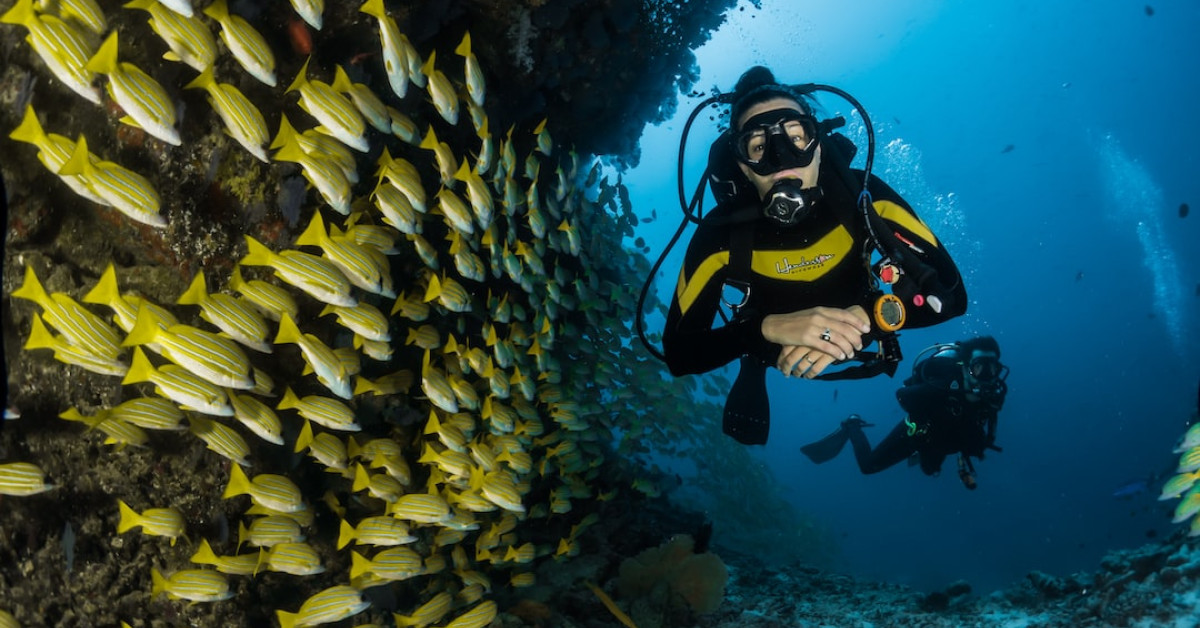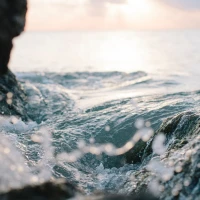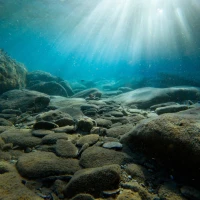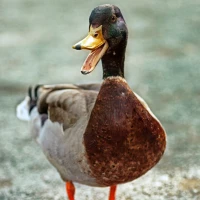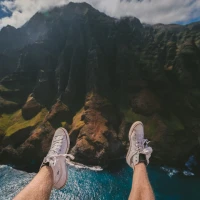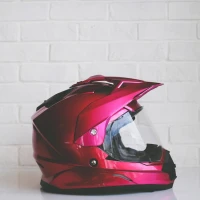Are you intrigued by the captivating beauty of the underwater world? Do you dream of exploring vibrant coral reefs, encountering fascinating marine creatures, and experiencing the weightless sensation of being submerged in water? If so, scuba diving might be the perfect adventure for you. In this article, we will guide you through the process of starting diving, from the essential equipment to the necessary certifications. So, let’s dive right in!
Understanding the Basics of Diving
What is Scuba Diving?
Scuba diving is a recreational activity that allows individuals to explore the underwater environment using a self-contained underwater breathing apparatus (SCUBA). With scuba gear, divers can descend to depths beyond normal human capabilities and experience the wonders that lie beneath the surface.
Why Start Diving?
Diving offers a unique perspective on the world beneath the waves. It provides a sense of tranquility, fascination, and adventure that few other activities can match beauty services. From vibrant coral reefs teeming with marine life to the eerie calmness of shipwrecks, diving opens up a whole new world waiting to be discovered.
Is Diving Right for You?
Before you embark on your diving journey, it’s important to consider whether it’s the right fit for you. While diving can be an incredible experience, it’s essential to be aware of its physical demands and risks. Here are a few factors to consider:
- Physical Fitness: Diving requires a basic level of physical fitness. You should be comfortable swimming and have no existing medical conditions that may be exacerbated by diving.
- Comfort in Water: You should be comfortable in water and confident in your ability to stay calm and relaxed while submerged.
- Time Commitment: Diving courses can take several days to complete, so make sure you have enough time to dedicate to the training.
- Cost: Diving can be an expensive hobby, particularly when factoring in equipment and certification fees. Consider your budget before diving into this adventure.
Getting Started: Steps to Become a Diver
Step 1: Research and Choose a Reputable Dive Center
Choosing the right dive center is crucial to your diving journey. Look for centers that are certified by reputable diving organizations, such as PADI (Professional Association of Diving Instructors) or SSI (Scuba Schools International). These organizations set high standards for safety and training, ensuring you receive quality instruction.
Step 2: Take a Discover Scuba Diving (DSD) Course
If you’re new to diving and unsure whether it’s right for you, a Discover Scuba Diving (DSD) course is a great place to start. This introductory program allows you to experience the underwater world under the direct supervision of a dive professional. During the DSD course, you’ll receive basic instruction on equipment usage and safety guidelines, followed by a controlled dive in shallow water.
Step 3: Enroll in Open Water Diver Training
Once you’ve completed the DSD course and determined that diving is your passion, it’s time to enroll in an Open Water Diver (OWD) course. This course is the entry-level certification that allows you to dive independently with a buddy to a maximum depth of 18 meters (60 feet). The OWD course typically consists of three components:
- Knowledge Development: You’ll learn the principles of diving through self-study, online modules, or classroom sessions. Topics covered include dive physics, physiology, equipment usage, and dive planning.
- Confined Water Dives: In a confined water setting, such as a swimming pool, you’ll undergo practical training to familiarize yourself with diving skills and techniques. This includes mask clearing, regulator recovery, buoyancy control, and underwater communication.
- Open Water Dives: The final step involves applying the skills you’ve learned in real dive scenarios. Under the supervision of your instructor, you’ll complete a series of open water dives to practice your skills and gain confidence.
Step 4: Complete Advanced Diver Training
After obtaining your Open Water Diver certification, you can continue your diving education by enrolling in advanced courses. These courses build upon the knowledge and skills acquired in the OWD course, allowing you to explore more challenging dive sites.
Some popular advanced courses include:
- Advanced Open Water Diver: This course introduces you to new diving environments and expands your knowledge and skills.
- Enriched Air Nitrox (EANx) Diver: Learn how to safely dive with enriched air nitrox, which allows for longer bottom times and shorter surface intervals.
- Rescue Diver: Gain essential skills to recognize and prevent potential diving emergencies, as well as the knowledge required to respond to them effectively.
- Specialty Courses: Explore specific areas of interest, such as underwater photography, wreck diving, or marine life identification.
Step 5: Consider Professional Levels of Certification
If you’re truly passionate about diving and want to take it to the next level, you can pursue professional levels of certification. These certifications allow you to work in the diving industry as an instructor or dive master, sharing your love for diving with others.
Some professional certifications include:
- Divemaster: A divemaster assists instructors in teaching diving courses, guides certified divers on dive trips, and generally acts as a role model for the diving community.
- Instructor: Becoming an instructor allows you to teach diving courses and certify new divers. It requires an extensive level of knowledge, experience, and dedication to dive safety.
Essential Equipment for Diving
Mask and Snorkel
A good-fitting mask is a must-have for any diver. It allows you to see clearly underwater while keeping water out of your eyes. Look for a mask with a soft silicone skirt that molds to your face shape for a comfortable fit. A snorkel is also handy for surface swimming and conserving air while observing marine life from the surface.
Regulator
The regulator is the lifeline that allows you to breathe underwater. It reduces the high-pressure air in your tank to a breathable pressure. When choosing a regulator, ensure it is designed for the diving conditions you plan to encounter. Some regulators provide better performance in cold water or at deeper depths.
BCD (Buoyancy Control Device)
The BCD is an inflatable vest that helps you control your buoyancy underwater. It allows you to hover at different depths, ascend, and descend with ease. Look for a BCD that fits snugly and has enough lift capacity to support your body weight.
Wetsuit or Drysuit
The choice between a wetsuit and a drysuit depends on the water temperature you’ll be diving in. A wetsuit traps a thin layer of water against your body, which is then warmed by your body heat. This provides insulation and allows you to stay warm in cooler waters. A drysuit, on the other hand, seals you off from the water entirely, keeping you dry and warm in colder environments.
Fins
Fins help you move efficiently through the water while conserving energy. They come in various styles, including open-heel fins (worn with boots) and full-foot fins (worn barefoot or with thin socks). When selecting fins, consider factors such as comfort, propulsion, and the type of diving you’ll be doing.
Dive Computer
A dive computer is an essential tool that tracks your depth, bottom time, and nitrogen absorption during a dive. It helps you stay within safe limits and minimizes the risk of decompression sickness. Look for a dive computer with user-friendly features, such as clear displays and audible alarms.
Other Accessories
Additional accessories that can enhance your diving experience include a dive light, underwater camera, dive knife, dive watch, and surface signaling devices. These accessories are not mandatory but can add convenience, safety, and enjoyment to your dives.
Diving Etiquette and Dive Safety
Respect for the Environment
As divers, it’s our responsibility to protect and preserve the underwater environment. Follow these guidelines to minimize your impact on marine ecosystems:
- Do not touch, chase, or disrupt marine life.
- Avoid anchoring on coral reefs or other delicate marine habitats.
- Strive for proper buoyancy control to minimize contact with the reef.
- Avoid excessive use of fins or hands to maintain stable positioning in the water.
Buddy System
The buddy system is a fundamental principle of dive safety. It involves diving in pairs and keeping a close eye on your buddy throughout the dive. The buddy system ensures that if one diver encounters a problem, the other can provide assistance or call for help.
Dive Planning and Safety Stops
Before every dive, it’s essential to plan your dive and dive your plan. This includes considering factors such as depth, dive time, expected water conditions, and entry/exit points. Additionally, safety stops during ascent are recommended to allow off-gassing of excess nitrogen and reduce the risk of decompression sickness.
Regular Equipment Maintenance
Maintaining and servicing your diving equipment is crucial for your safety. Follow manufacturer’s recommendations for equipment care, and have your gear serviced regularly to ensure it is functioning properly.
Top Dive Destinations for Beginners
The Great Barrier Reef, Australia
The Great Barrier Reef is a world-renowned diving destination that offers breathtaking underwater landscapes and an abundant array of marine life. With plenty of dive centers catering to beginners, it’s an ideal location to start your diving adventures.
The Red Sea, Egypt
The Red Sea’s crystal clear waters, stunning coral reefs, and vibrant marine life make it a popular choice for divers of all levels. From gentle sloping reefs to impressive drop-offs, there’s something for everyone to enjoy.
Bonaire, Caribbean
Bonaire is known for its incredible visibility, calm waters, and protected marine parks. It’s a fantastic destination for beginner divers, with easy shore entry points, colorful reefs, and the opportunity to spot turtles, eels, and other tropical species.
Koh Tao, Thailand
Koh Tao, meaning “Turtle Island” in Thai, is famous for its affordable diving and calm waters. The island offers an abundance of dive sites suitable for beginners, where you can encounter diverse marine life, including colorful coral gardens and harmless reef sharks.
Utila, Honduras
Utila, located in the Caribbean Sea, is a popular budget-friendly destination for diving enthusiasts. It’s home to the second-largest barrier reef system in the world and provides an excellent training ground for beginners. Utila is particularly renowned for its frequent encounters with whale sharks.
Conclusion
Embarking on your diving journey is an exciting opportunity to explore the wonders of the underwater world. By choosing a reputable dive center, obtaining the necessary certifications, and investing in essential diving equipment, you’ll be well on your way to becoming a proficient diver. Remember to prioritize safety, respect the marine environment, and enjoy the breathtaking experiences that diving offers. So, what are you waiting for? Dive in and discover a whole new world beneath the surface!
